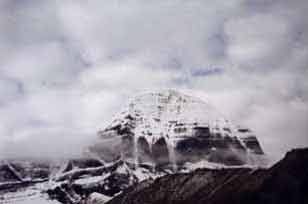Revolution by intimidation
Brahma Chellaney
Having helped sow the wind in Nepal, India now will reap the Maoist whirlwind. New Delhi first ceded strategic space in Nepal to outside powers and the United Nations and then, in an intimidationplagued environment, encouraged a process that has sprung a nasty surprise.
Yet, no sooner than the Maoists triumphed in the elections, New Delhi’s after-the-fact rationalisations began.
Nepal is not just another neighbour but a symbiotically linked state with close cultural affinity and open borders with India that permit passport-free passage. The Indo-Nepal equation is deeper than between any two European Union members.
Indeed, ever since the 1950 Chinese annexation of Tibet eliminated the outer buffer, Nepal has served as an inner buffer between India and China.
The Maoist victory presents India with new potential challenges. It is likely to embolden other revolutionaries in the red corridor from Pashupati to Tirupati that the way to secure power is to wage unbridled violence until the established order gives in to a political and constitutional restructuring.
Equally significant is that India now will have to openly vie with China for influence in a state that had been its security preserve for more than half a century.
Maoist leader Prachanda’s pledge of “equidistance between India and China” despite Nepal’s 1950 security treaty with New Delhi underscores Beijing’s gain.
At a time when China is still battling a Tibetan uprising, the Nepal events arm it with additional leverage to dissuade New Delhi from playing the Tibet card.
It is karmic justice that the monarchy, which for long sought to play the China card against India, now faces extinction from the very forces—the Maoists—it initially helped rear to counter the India-friendly Nepali Congress.
Working with the guerrillas
The poll outcome raises the spectre that radicalisation could extend from the polity to the military, as the victors seek to integrate their former fighters into the security forces.
The Maoists’ stint in office, however, could help gradually defang them by making them indistinguishable from other politicians.
The new situation signals three likely developments.
First, Nepal’s rocky and troubled path to democracy since 1990 is unlikely to end, with the polls marking only the newest chapter in a blemished experiment.
Second, India’s relationship with Nepal is set to become more complicated, with little progress likely on addressing Indian security concerns or harnessing hydropower reserves for mutual benefit.
And third, the Maoists’ hard part comes now on the twin issues of governance and Constitution framing.
Those who sought to bring about a revolution by chipping away at state institutions are being called upon to reverse state atrophy. It won’t be easy for them to embrace what the situation demands — consensus building. If anything, they are likely to make India a convenient scapegoat for their failures in office.
Despite its proverbial aversion to hard decisions, India is left with no soft options. An openborder policy is sustainable only if India moves its security perimeter to the Nepalese frontier with Tibet. The onus must be placed on the Maoists to show through actions that the government they lead deserves sustained Indian aid, or else these revolutionaries will take Indian aid and also damn India.
New Delhi ought not to shy away from employing the immense leverage it holds: Nepal’s topography, with mountainous terrain sliding southward into plains, shapes its economic dependence on India. The ethnic Madhesis who populate the Terai, Nepal’s food bowl, are India’s natural constituency, and that card is begging to be exercised.
— The author is professor of strategic studies at the Centre for Policy Research. http://indiatoday.digitaltoday.in/index.php?option=com_content&task=view&id=7147&issueid=50
skip to main |
skip to sidebar













Don't put the key to your
happiness
in someone else's pocket.
INTERFAITH

Informative Links
Bharat Raagini
Incredible : INDIA
Dil Hai Hindustani
Aana Hai Tou Aa
Jagte Raho
Behti Hai Ganga
Insaaf Ka Mandir
Los Angeles,USA

Sydney, AUSTRALIA

Himalayas, India

Swiss Alps

Eiffel Tower,Paris

Tower Bridge, London

Grand Place, Brussels

SUNRISE

Machu Picchu, PERU

Venice

Modern Art

Pencil sketch

Think about this;
Don't put the key to your
happiness
in someone else's pocket.